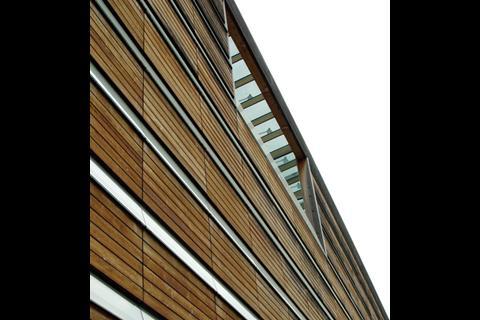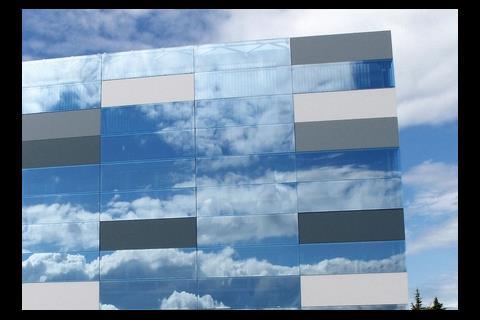Unlike, say, a brick wall, an office building’s cladding is a sophisticated system that requires careful thought, assiduous testing and examplary workmanship. Peter Caplehorn of Scott Brownrigg explains
The cladding and curtain walling of any building is a deceptively complex and technically advanced system. It is organised around preventing water ingress and controlling air permeability and most are a carefully designed selection of panels, glass, gaskets, channels and thermal breaks.
However, many issues can reduce its life or mean it requires premature maintenance. The specifier needs to understand these issues and make allowances for them at the earliest stages of the project.
Two main principles used to control water are the internally draining design and the rain screen system.
The internally draining system
In the internally draining system there is a primary seal that excludes most of the rain and major air flows. There is also a secondary seal inside the system that will either allow air and water to exit at every storey height or at the base of the wall.
The specifier should have a clear understanding of the principles and the type of system that is required. The most common is to have a drain at every storey. This requires careful design and installation of the cruciform sections that allow drainage from the transoms into the mullions.
The most common problems are blockages within the drainage system at this point – a small amount of sealant applied to this junction in construction can constrict the water channels resulting in a build up of debris that leads to eventual blockage. This will become apparent when the system fills with rainwater and a leak occurs at the weakest point.
The specifier needs to ensure that the workmanship clauses in the specification documents are adhered to. As most seals are cut to size on site, it is easy for them to be cut short, left too long or even installed the wrong way around.
Wind can also exert pressure on cladding. This will be allowed for in the basic engineering, however, the specifier should consider the degree of flexing the system may undergo. A small amount of give to wind pressure is desirable to relieve excessive stress, however it is easy for seals and drainage channels not to function correctly if this flexing moves them out of position. Full pressure testing to the Centre for Window and Cladding Technology standard, as a minimum, should be a prime part of any specification.
Solar radiation and thermal stress
Solar radiation must be taken into account when specifying glues, sealants and man-made materials used for thermal breaks. These can lose some of their performance, such as strength, flexibility or adhesions, if exposed to sunlight. The specifier should ensure that these components are either able to resist solar radiation or that they are shielded from its worst effects.
Apart from the normal diurnal range of temperatures, direct sunshine can also induce thermal stress on cladding systems.
Systems need to account for the expansion and contraction that is created and specifiers should look at connections and fixings to ensure adequate allowance is incorporated. As systems incorporate more efficient thermal breaks, this thermal gradient is being increased.
Seals and gaskets are also affected by extremes of temperature. Cold causes a reduction in flexibility, while heat may cause excessive expansion and elements may move out of position.
Rainscreens
A rainscreen system has open joints that allow air and some degree of moisture to enter the cavity behind the panels. This is usually small, but the designer needs to account for the fact the cavity will be subject to water ingress as part of the system’s normal working.
Brackets and fixings and the internal facing of the cavity must be specified with this in mind. In many cases insulation will be located on the inside face of the rainscreen cavity. This must be moisture resistant and many types of insulation are specifically made for this type of application.
It is also important to realise that if a vapour-permeable type of insulation is used it should allow evaporation to the outside. Preferably a vapour control layer on the inside of this type of product should also be used to prevent high level of condensation occurring, especially if lightweight construction is used for the remainder of the wall section.
Points to watch
- Ensure you understand the drainage system for the particular cladding you are selecting
- Look at the history and heritage of the systems under consideration
- Exposed sites will put more stress on the cladding system
- Call for testing or test results specific to the project requirements, including full pressure testing to the Centre for Window and Cladding Technology standard
- Remember that thermal gradients are increasing, which can put more stress on the system
- Look at reference sites and buildings that have used similar cladding systems.
Specifier 02 November 2007

Specifier 02 November 2007
- 1
- 2
- 3
- 4
- 5
- 6
- 7
- 8
- 9
- 10
- 11
- 12
- 13
 Currently
reading
Currently
reading
What to remember: Cladding









































No comments yet